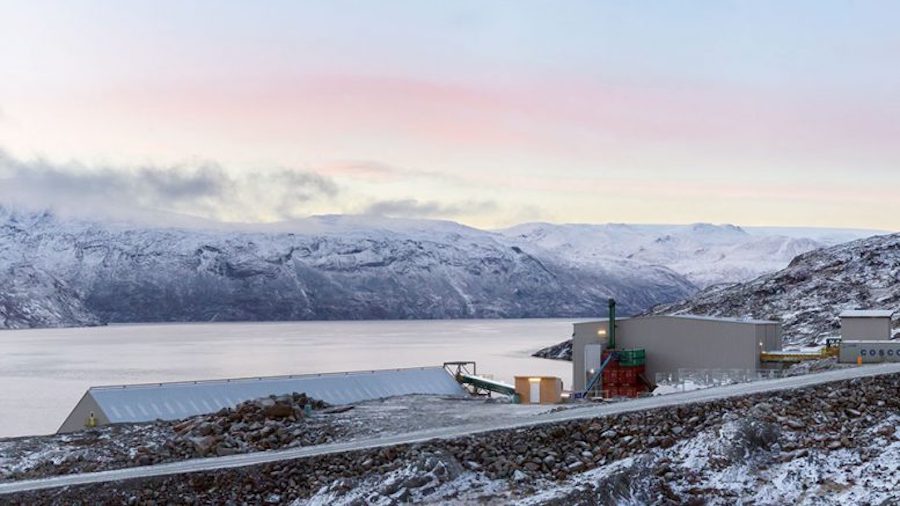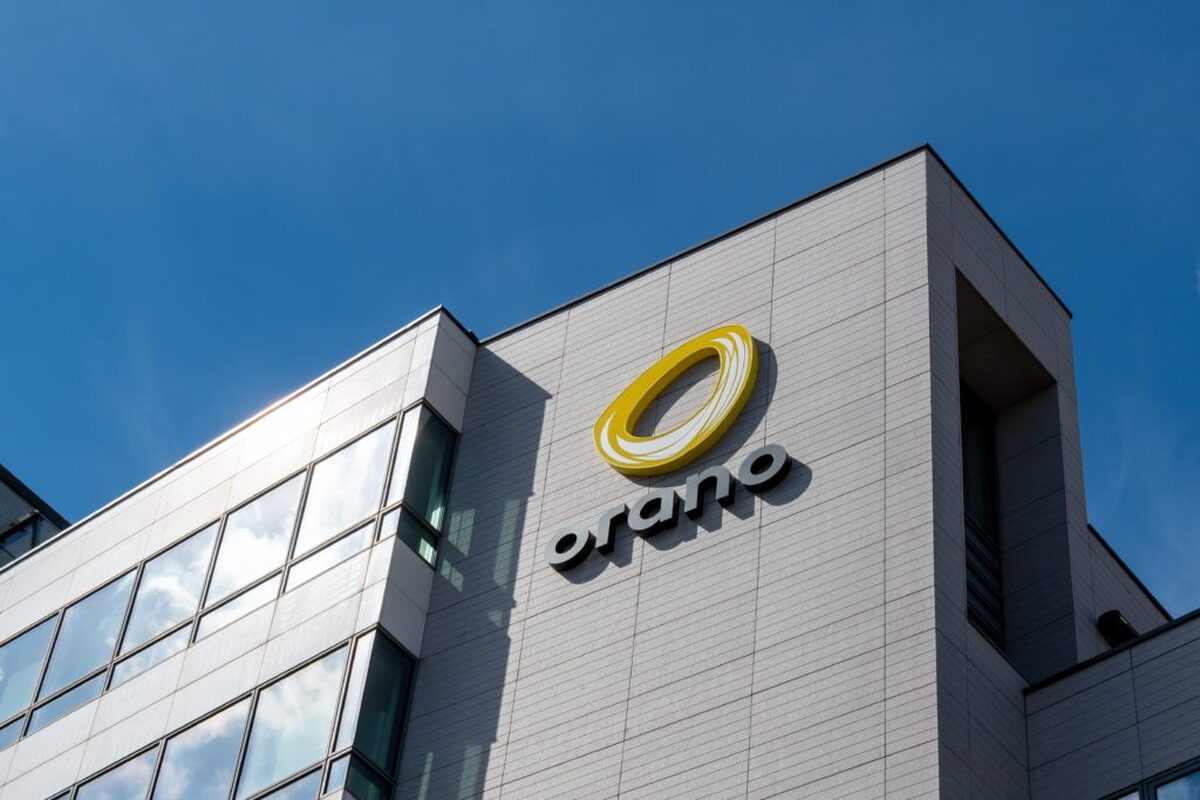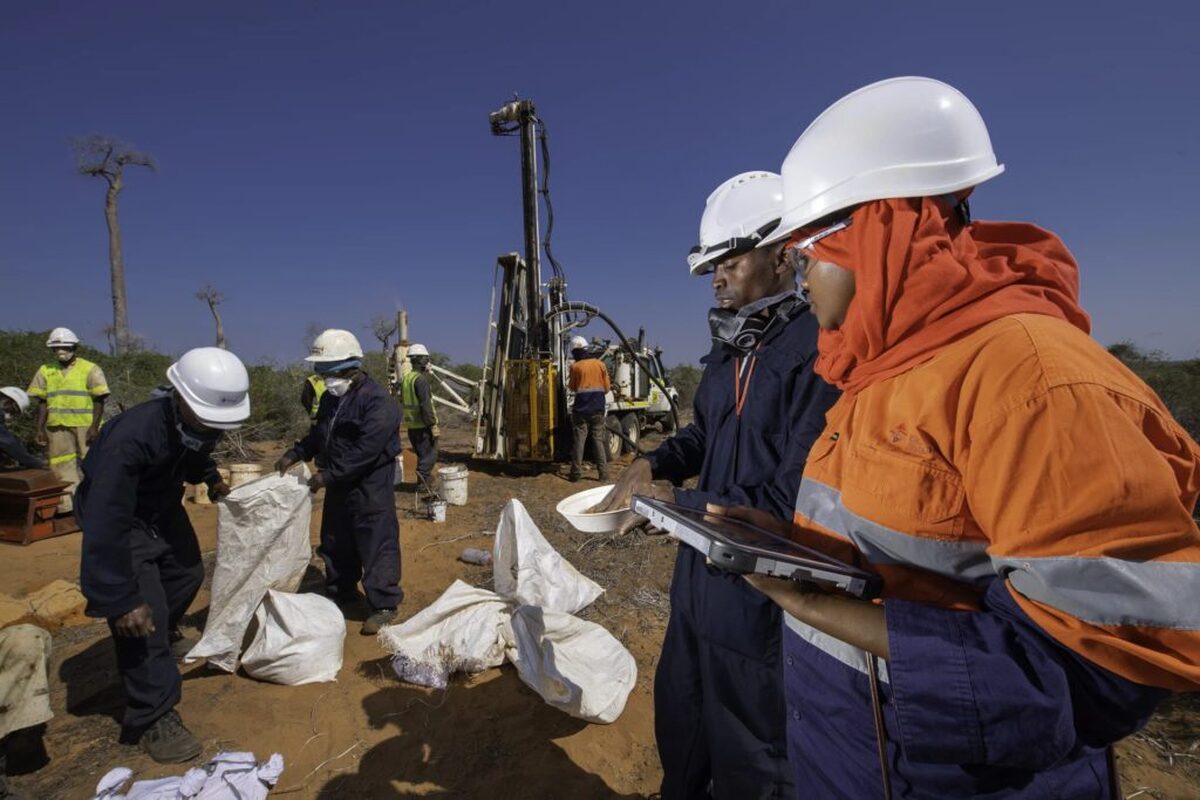
Revving up Greenland’s mineral production will take time

The cargo ship was carrying more than 14,000 tonnes of anorthosite from Vancouver-based Hudson Resources’ (TSXV: HUD; US-OTC: HUDRF) White Mountain mine in Greenland for customers in the paints, coatings and fibreglass markets. Hudson has an agreement with Terra Firma, a privately held chemical distributor, to market its anorthosite in the U.S., and a 10-year offtake agreement with an unnamed fiberglass producer.
Could White Mountain and other mineral deposits — especially those containing rare earth elements (REEs) used in most electronic devices, and in the aerospace and defence industries — be what U.S. President Donald Trump had in mind when he offered in August to buy Greenland, a proposal Denmark called “absurd”? That’s at least part of the story.
Earlier this year, the U.S. Department of State sent some its officials to mineral projects in the region, including White Mountain, and signed a memorandum of understanding with the Greenland Ministry of Mineral Resources and Labour to conduct an aerial hyperspectral survey to boost mineral exploration investment there.
In early September, national security advisor John Bolton followed up Trump’s purchase offer by tweeting a photo of himself and the U.S. ambassador to Denmark, Carla Sands, saying the two discussed “Arctic and energy security, trade and boosting U.S. economic ties with Greenland, including investments in mineral exploration projects, and airport upgrades.” Bolton has since left the White House, but presumably these intentions remain.
Greenland, an autonomous region under the Kingdom Of Denmark, is the world’s largest island. Americans have operated an air base on the northwest coast of the island since 1943.
Greenland makes its own decisions regarding investments in mineral resource activities, including the granting of licences. The region recently issued more exploration and mining licences in a bid to diversify its economy.
A surface showing of pink sapphire and ruby mineralization at True North Gems’ Kigutilik gemstone project in Greenland. (Image by True North Gems).
Though 80% of Greenland’s landmass is covered by ice, mineral exploration has occurred systematically on the mostly Archean and Paleoproterozoic rocks exposed along the coast since the 1960s.
These efforts have resulted in several discoveries over the decades, including nickel, lead-zinc, gold, gemstones including diamonds, uranium and rare earth minerals. But only a few mines have been developed, likely because of the tough operating conditions in Greenland, where temperatures are below freezing more often than not, and road infrastructure is virtually nonexistent.
“You have deepwater ports along the coastline to move bulk shipments in and out,” says Jim Cambon, Hudson Resources’ president, who has worked in Greenland for 14 years, first drawn there by the island’s diamond potential. “But there are lots of disadvantages. It’s remote, you have to produce your own power, and it’s challenging to find good workers among a population of 55,000, with almost zero percent unemployment.”
Cambon says that unless you have a mineral deposit that is unique or in the top 10% of projects by value, it’s difficult to establish an economic mine in Greenland.
As a result, White Mountain and privately owned Greenland Ruby’s ruby and pink-sapphire operation are the only mines operating there. White Mountain, which began production on the west side of the island in February, has a 30-year licence (extendable to 50 years), and is forecast to produce to 200,000 tonnes of anorthosite per annum. Greenland Ruby, based in Nuuk, opened its mine on tidewater 250 km south of the capital in May 2017, and has a sales and marketing arm in New York.
Other companies are making slow progress towards development. London-based Bluejay Mining (LON: JAY) recently received an export permit to ship 40,000 tonnes of bulk sample material from the Dundas ilmenite project to the company’s pilot processing plant in Quebec. Dundas has a Joint Ore Reserves Committee Code (JORC)-compliant reserve of 67.1 million tonnes, with a mean grade of 7.3% ilmenite, though its particularly remote location, on the northwest coast of Greenland near the U.S. Thule air base, presents unique challenges, such as a limited shipping window.
Ilmenite is used to make titanium dioxide for personal care products like toothpaste, and as a pigment in paint.
Down south, Perth-based Greenland Minerals and Energy (ASX: GGG) reckons it can put its massive Kvanefjeld rare earth deposit into production for US$505 million. Kvanefjeld has a JORC-compliant resource of 1.01 billion tonnes grading 1.1% total rare earth oxides (TREO), as well as substantial uranium and zinc resources. Shenghe Resources, a major Chinese rare earths company, owns an 11% stake in the junior. Assuming Greenland Minerals can secure both financing and a mining licence, Kvanefjeld could produce by 2022.
Rare earths are essential ingredients in several high-tech applications, including electric vehicles and wind turbines. China — where more than 70% of rare earths are mined — controls the market, and is fickle about supply.
The U.S. would benefit from having access to its own production, especially while a trade war with China drags on. The Pentagon has repeatedly voiced its concerns about American reliance on China for rare earth minerals, including in an October 2018 review of defence issues.
The Tanbreez rare earth project in southern Greenland, held privately by an Australian company of the same name, is a potential alternative to Kvanefjeld, where the Chinese hold sway. Another possibility is Hudson’s Sarfartoq REE project, which has an inferred resource of 14.1 million tonnes averaging 1.51% TREO, and occurs within 20 km of tidewater.
In the gold sector, AEX Gold (TSXV: AEX) is trying to revive the Nalunaq mine in southern Greenland that produced 350,000 oz. gold between 2004 and 2009, and has a National Instrument 43-101 complaint resource of 446,900 inferred tonnes grading 18.7 grams per tonne (263,000 oz. gold). The Toronto-based company recently completed a $5-million private placement. Vækstfonden, a Danish growth fund and Greenland Venture A/S, subscribed to $3 million of the offering.
Larger mining companies have been absent from the country for several years, although Greenland recently granted London-based Anglo American (LON: AAL) two exploration licences for nickel, copper and platinum group metals in the west.
But the idea that large swaths of Greenland will open up for exploration — as a result of melting ice sheets, as the earth heats up — are overblown, Cambon said. “If you get an extra 5 or 10 metres of rock to look at, that doesn’t change your overall outlook on exploring in Greenland,” he said.


Trump weighs using $2 billion in CHIPS Act funding for critical minerals

Codelco cuts 2025 copper forecast after El Teniente mine collapse

Electra converts debt, launches $30M raise to jumpstart stalled cobalt refinery

Barrick’s Reko Diq in line for $410M ADB backing

Abcourt readies Sleeping Giant mill to pour first gold since 2014

Nevada army depot to serve as base for first US strategic minerals stockpile

SQM boosts lithium supply plans as prices flick higher

Viridis unveils 200Mt initial reserve for Brazil rare earth project

Tailings could meet much of US critical mineral demand – study

Kyrgyzstan kicks off underground gold mining at Kumtor

Kyrgyzstan kicks off underground gold mining at Kumtor

KoBold Metals granted lithium exploration rights in Congo

Freeport Indonesia to wrap up Gresik plant repairs by early September

Energy Fuels soars on Vulcan Elements partnership

Northern Dynasty sticks to proposal in battle to lift Pebble mine veto

Giustra-backed mining firm teams up with informal miners in Colombia

Critical Metals signs agreement to supply rare earth to US government-funded facility

China extends rare earth controls to imported material

Galan Lithium proceeds with $13M financing for Argentina project

Kyrgyzstan kicks off underground gold mining at Kumtor

Freeport Indonesia to wrap up Gresik plant repairs by early September

Energy Fuels soars on Vulcan Elements partnership

Northern Dynasty sticks to proposal in battle to lift Pebble mine veto

Giustra-backed mining firm teams up with informal miners in Colombia

Critical Metals signs agreement to supply rare earth to US government-funded facility

China extends rare earth controls to imported material

Galan Lithium proceeds with $13M financing for Argentina project

Silver price touches $39 as market weighs rate cut outlook




















